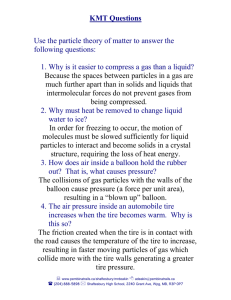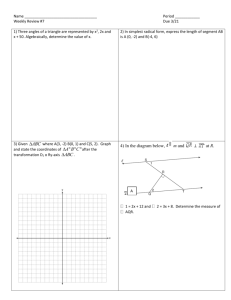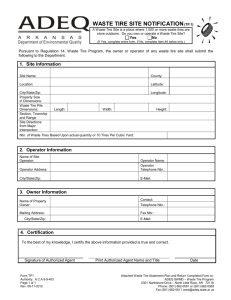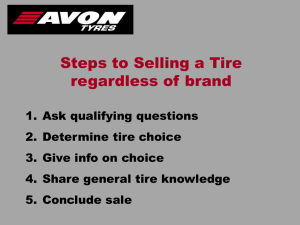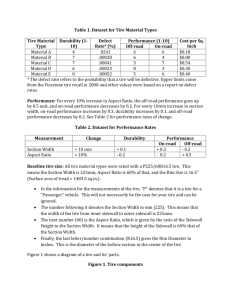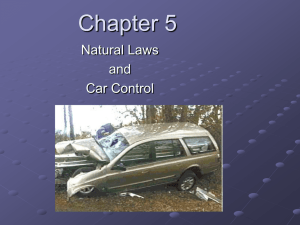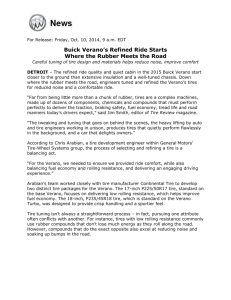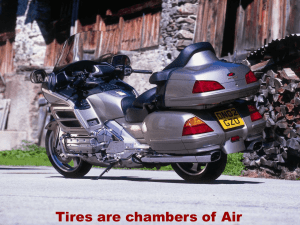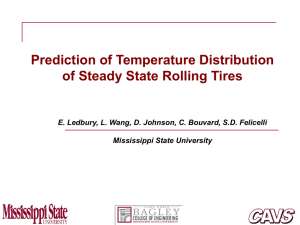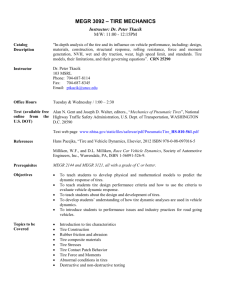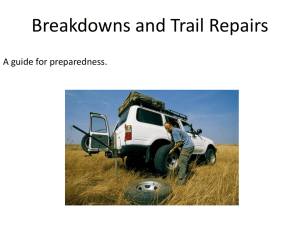SELF INFLATING TYRE SYSTEMS
advertisement
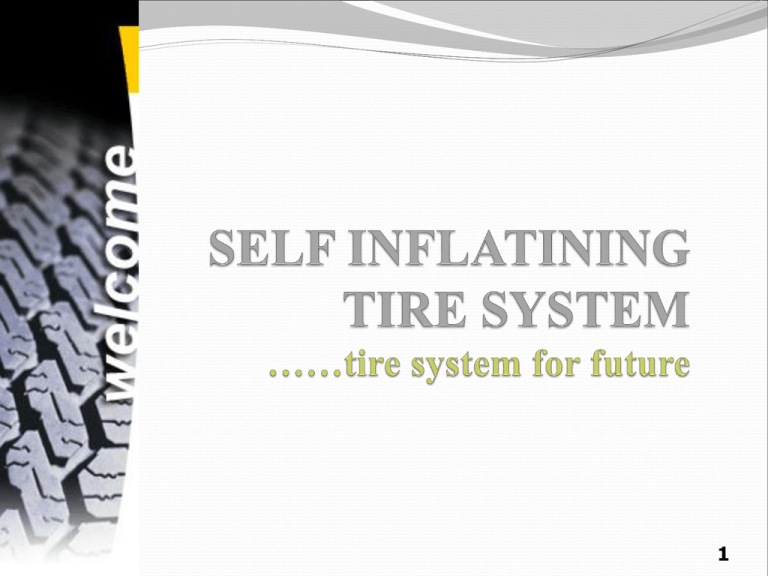
1 Please Pay Attentions Research studies show that under-inflated tires are a major issue today. In the USA 27% of passenger cars and 32% of light trucks have at least one tire under pressured by more than 25%. This results in 1.24 billion gallons of wasted fuel per year (costing 3.7 billion USD). In the EU 38% of cars in the EU drive on under-inflated tires. This results in 5.3 billon liters of wasted fuel worth of 7 billion EUR, and an extra 12.3 million tons of CO2 released into the atmosphere. So, we can say that we require a system is easy and inexpensive to produce would bring enormous savings in fuel, pollution, and human lives when implemented on a large scale. 2 Some Other Statistics A statistics show that tires which are under inflated by as little as 2 psi reduce fuel efficiency by 10 percent. Over a year of driving, that can amount to several hundred dollars in extra fuel purchases. One of reason for Road Accident is less or Insufficient Tire Pressure. Near about 10,000 injuries could be prevented per year if all vehicles were equipped with tire pressure monitoring systems. GM offered these in CUCV(Commercial Utility Cargo Vehicle) Blazers and pickups used by U.S. military. 3 4 Different Tire Conditions And Effect On Different Tire Pressure 5 SELF-INFLATING SYSTEMS Tire-inflation systems have three general goals: Detect when the air pressure in a particular tire has dropped Notify the driver of the problem Inflate that tire back to the proper level 6 PARTS OF SELF-INFLATING SYSTEM Tire deflation valves Tire inflator hoses To operate tire deflation valve this is screwed onto the existing tire valve. It inflates the tire to a required pressure. 7 CTIS: INSIDE Wheel Valve ECU Pneumatic Control Unit Control Panel Speed Sensor Pressure Switch 8 TIRE MAINTENANCE SYSTEM (TMS) Similar to CTIS It notifies the driver via warning light(visible in rear mirror). After every 10 min. or time period specified system check the tire pressure. 9 AIRGO SYSTEM 1. When a tire loses pressure, due to a puncture or other seepage, a series of check valves automatically detects it. 2. The System then immediately draws air from the vehicle’s pneumatic system and directs it to each tire requiring air. 3. The air pressure is delivered via the trailer’s hollow axle housing. 4. The air then goes through the hub assembly and into the tires. It is completely isolated from the brake system 10 Wheel-End Assembly 11 Why YOU & ME go for SIT SAFETY FUEL ECONOMY TIRE LONGEVITY ENVIRONMENTAL FRIENDLINESS CONVENIENCE LOW VARIABLE COSTS 12 Achievements SIT – The Self Inflating Tire won the prestigious Tire Technology of the Year award at the Tire Technology Awards for Innovation and Excellence 2009 which were presented at the Tire Technology Expo In Hamburg, Germany 13 Conclusion Increases safety, comfort and fuel efficiency Flexibility for drivers Future tires Better option to reduce road accidents 14 Thank y o u 15
